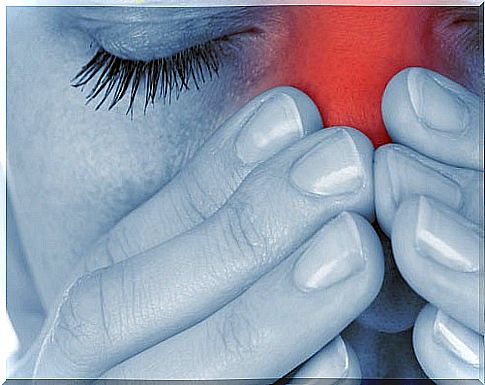Rhinitis
Rhinitis rarely appears as an isolated entity. In most cases it is associated with other processes, such as allergy, infections, changes in temperature …

Rhinitis is an inflammation of the mucosa that lines the nasal passages, produced as a consequence of different pathological mechanisms.
Classification
There are different classifications. On the one hand, based on the length of time, rhinitis can be classified as acute and chronic. On the other hand, depending on the pathophysiological mechanism, they can be classified as allergic and non-allergic.
- Acute rhinitis is considered to be those that last less than 6 months, and those that last longer are chronic.
- Allergic rhinitis : they are the consequence of hypersensitivity reactions.
- Non-allergic rhinitis : are those that occur in response to all kinds of non-allergic mechanisms. These are, for example, infectious rhinitis, vasomotor, medicinal, hormonal, among others.
Atrophic rhinitis, a consequence of the reduction in the size of the inferior turbinates, should also be considered . This produces inflammation of the nasal mucosa to the passage of air, which in turn, is responsible for the symptoms.
Allergic rhinitis

It is a problem that affects 20% of the population, there are significant differences between the condition that appears in adults and that that appears in children. In addition, both its relationship with asthma and its possible complications are especially important.
It has been proven that it is possible to inherit a certain genetic predisposition; that is, there is a greater probability of reacting abnormally to stimuli that should be harmless. In addition, environmental influence is very important, since prolonged exposure to an agent (pollen, latex) can lead to allergy.
When it is said that someone has an allergy to something, it means that that person is sensitized ; that is, it has antibodies that will recognize the allergen; consequently, the immune response is triggered and the symptoms of allergy appear.
What are these differences?
In adults an acute rhinitis has a very characteristic presentation, and very easy to recognize. Nasal obstruction usually occurs, with itching, sneezing and rhinorrhea.
In children, on the other hand, the sensation of nasal obstruction is less frequent. However, recurrent pharyngeal infections and conjunctivitis (red eyes, itching, tearing, among others) are very common (70-80%).
In the most chronic cases, children can develop sinusitis due to the expansion of inflammation to the lining of the paranasal sinuses. In addition, it can cause loss of appetite, with its consequent weight loss and growth retardation.
And do they have something in common?

Yes. In cases of chronic allergic rhinitis, chronic coughing is very common. It is due to the constant presence of mucus in the nostrils, and its dripping into the pharynx. This irritates the mucosa, causing a cough to appear. Furthermore, allergic rhinitis is almost systematically associated with asthma.
- Allergic rhinitis can occur along with asthma. In this context, we refer to seasonal allergic rhinitis (and that associated with other allergens, not just pollen). It is due to the fact that both atopy (allergy) and asthma share pathophysiological mechanisms.
- Allergic rhinitis can be a cause of asthma. The studies carried out showed that suffering from this disease increased up to 2 and 3 times the probability of suffering from asthma.
- First, because of the asthma – allergy genetic association.
- Second, because the inflammation of the airways caused by allergies can cause bronchoconstriction.
- And finally, because postnasal drip can inflame the bronchial tubes.
Non-allergic rhinitis
Nonallergic rhinitis is not related to the hypersensitivity mechanisms responsible for the allergy. It is believed to be due to the dilation of the blood vessels that supply the inside of the nose. This vasodilation would be a consequence of the incidence of different agents such as environmental irritants, spicy food or infections, among others.
Diagnosis

The diagnosis is established based on the clinical history and symptoms. It is especially important, therefore, to ask about medications, current or recent infections, other diseases, occupation, existence of allergies, among others.
If allergic rhinitis is suspected , skin tests are indicated to determine the origin. On some occasions (rather rare), a nasofriboscopy may be indicated.
Treatment of rhinitis
It will depend on the type of rhinitis and the patient. However, it can be said that antihistamines in nasal spray are usually prescribed for seasonal allergic forms. In more severe cases, corticosteroids may be prescribed. In addition, there are multiple remedies to alleviate symptoms.
In the case of non-allergic forms, the treatment will depend on the cause. For example, if it is of infectious origin, it will disappear with the resolution of the process. In the case of drug origin, an attempt will be made to change the drug for a different one that has the same effect.









